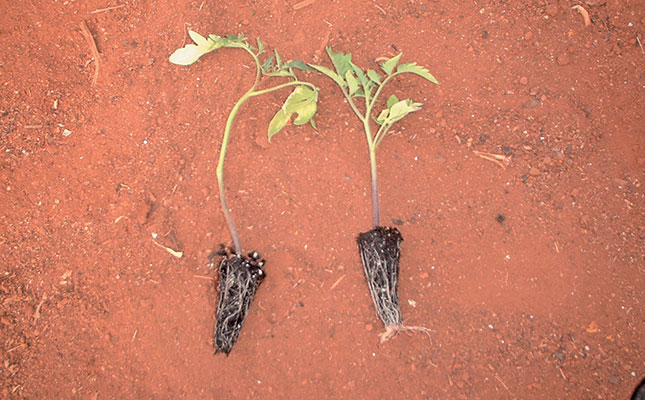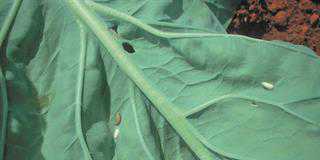
Photo: Bill kerr
The seedlings may be growing actively with adequate nutrients in the plant and growing medium, or they may be lacking in nitrogen (N).
This could be due to the seedling grower halting growth at a predetermined stage or hardening the plant to ensure survival under unfavourable climatic conditions.
In the latter case, such a seedling will indeed be a ‘survivor’. However, it will also be a slow starter, because the lack of nitrogen will prevent both top and root growth.
In addition, it may take time for the roots to source nitrogen in the soil, as the irrigation is flushing the available nitrate ever deeper into the soil.
To prevent this, ensure that the seedling is ready for a ‘fast start’ by applying LAN just before planting to ensure that the seedling lacks nothing.
Transplant seedlings with the growing medium wet to protect the fine root hairs from drying out. This stresses the plant and makes the root system more vulnerable to attack from disease-causing organisms.
To ensure sufficient nitrogen, add one closed handful of LAN to between 8ℓ and 10ℓ of water and apply to 1 200 plants with a watering can. (If the plants are not hardened, apply less LAN.)
LAN contains both immediately available nitrate and ammonia, which is made available a little later through the action of certain soil organisms.
Unless rain leaches out the applied fertiliser, you can delay the next application. At this stage, the plant is small and requires relatively little nitrogen.
The roots will also be growing rapidly, harvesting the nitrogen applied in the basic fertilisation as well as the nitrogen released from organic matter through micro-organism activity.
Don’t waste money on unnecessary products
Ignore products that claim to ‘get plants off to a better start’. Seedling growers ensure that their plants are adequately fertilised or they would not be able to produce plants economically.
Fertilise your land according to your experience or a soil analysis to ensure that the plants thrive. Applying anything other than nitrogen, as discussed, is unnecessary.
The seedlings should be produced to suit the conditions into which they will be planted. This is usually taken into account by seedling growers, who produce plants likely to be successful for both the area and the time of the year.
However, it is wise to check with the grower to make sure that he understands your requirements.
The ideal: a steady growth rate
The ideal seedling is one that is actively growing and able to maintain this growth rate when transplanted into a suitable environment.
Hardening, if needed, should take place in the nursery and not after it has been transplanted into the land.
The first priority is a 100% stand and then getting the plants off to a quick start.
Bill Kerr is a vegetable specialist and a breeder of a range of vegetables.











